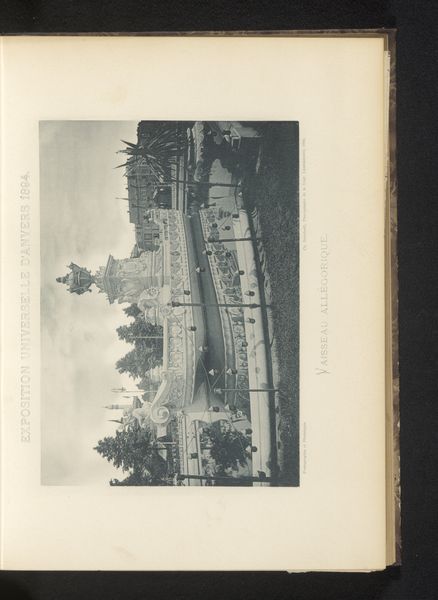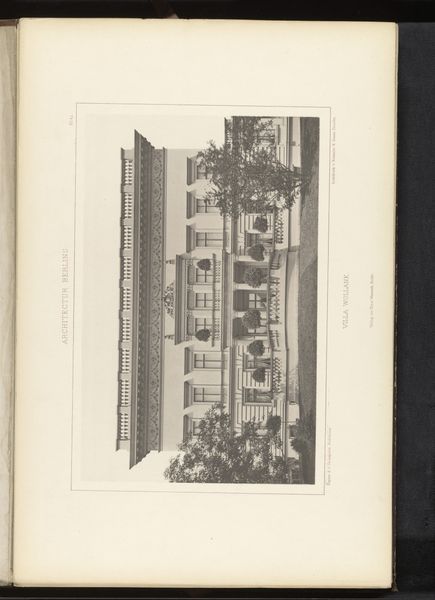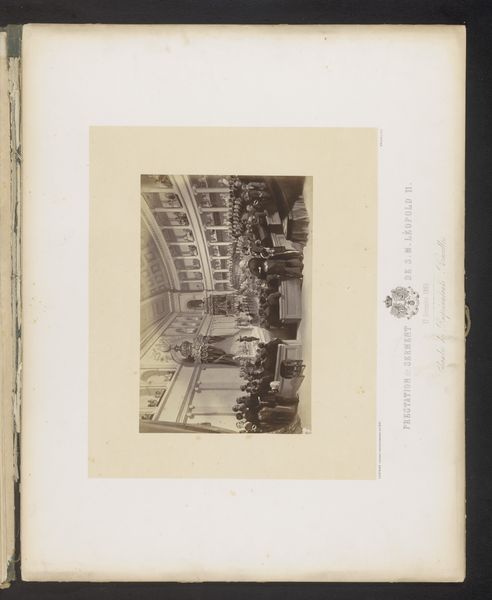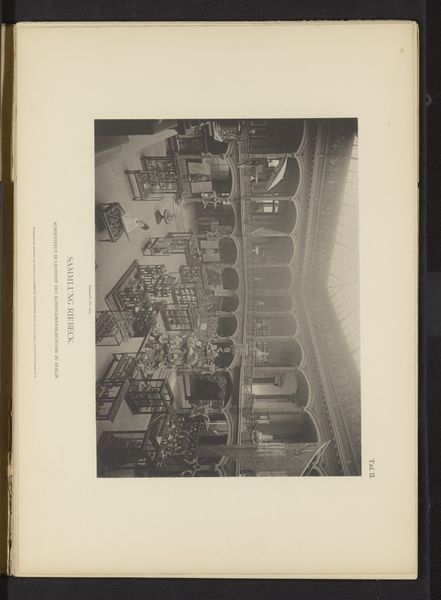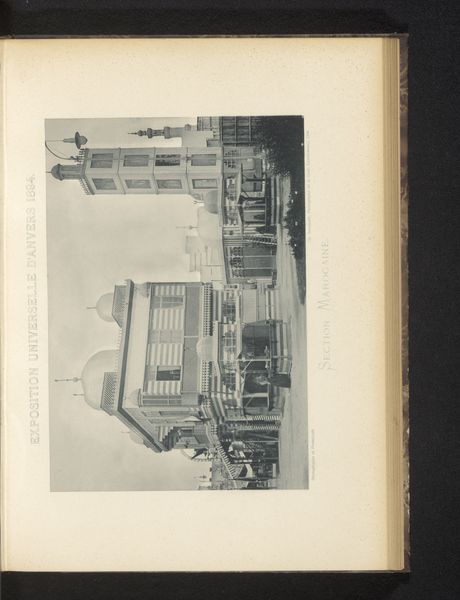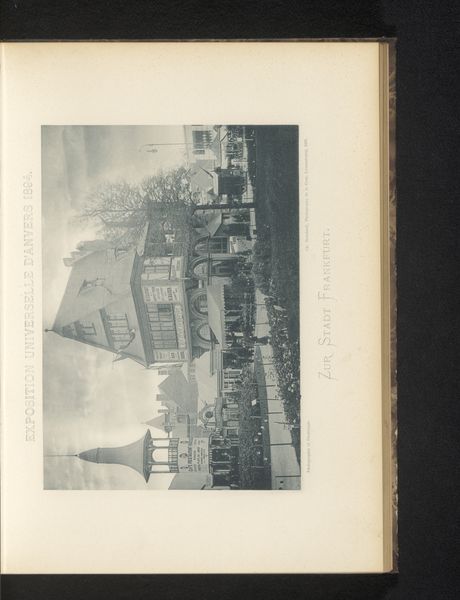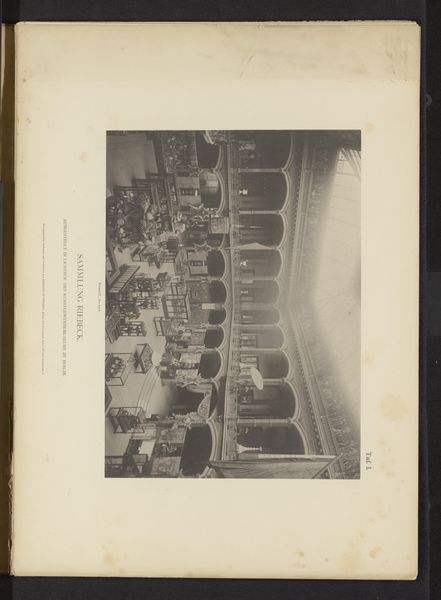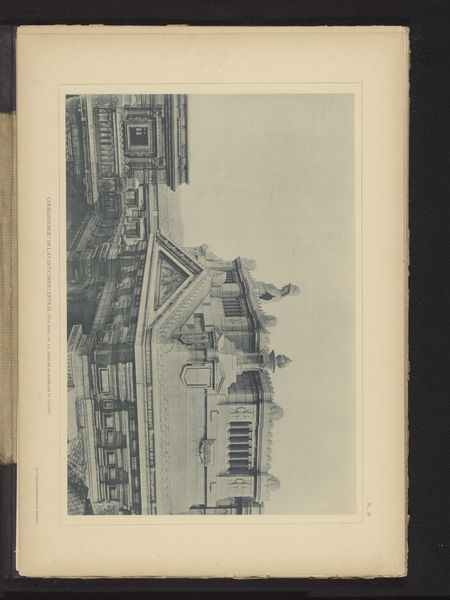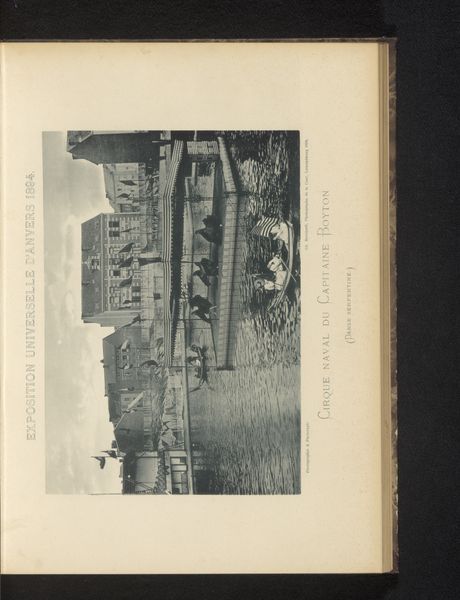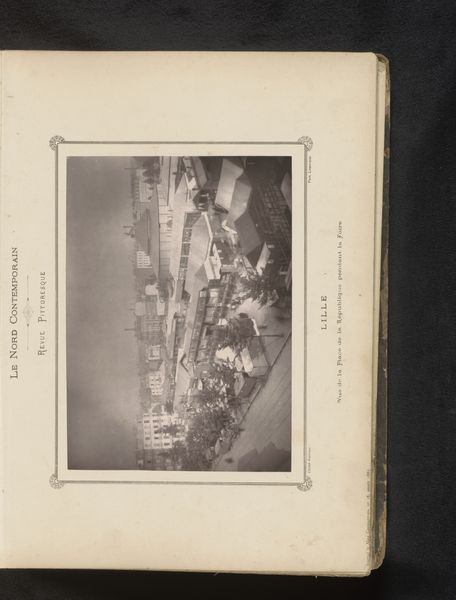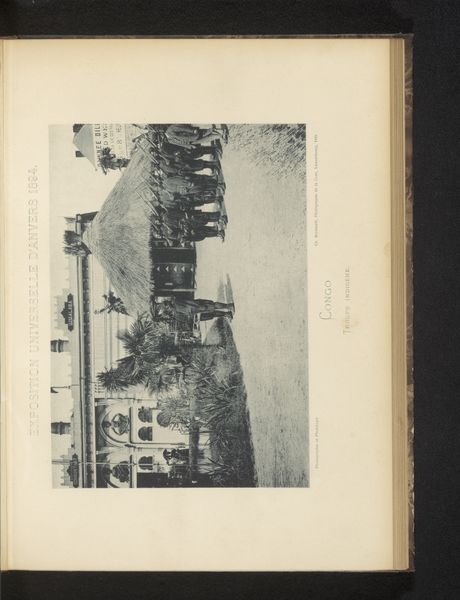
Gezicht op het muziekgebouw van de Wereldtentoonstelling van Antwerpen in 1894 1894
0:00
0:00
print, public-art, photography, site-specific, albumen-print, architecture
# print
#
neo-impressionism
#
landscape
#
public-art
#
photography
#
site-specific
#
cityscape
#
albumen-print
#
architecture
Dimensions: height 152 mm, width 222 mm
Copyright: Rijks Museum: Open Domain
Editor: This is an albumen print by Charles Bernhoeft, titled "View of the Music Building of the Antwerp World Exhibition in 1894." It feels so grand and ordered, almost a little overwhelming in its precision. What catches your eye most when you look at it? Curator: What strikes me immediately is the photographic medium itself. The albumen print lends the image a sense of delicate impermanence, which contrasts sharply with the image's subject: a monument intended to celebrate progress and global connection. Do you see that tension? Editor: I think so. The photo almost looks like a memory. But the building in the photo feels very much "of the moment" celebrating technological advancements, surely? Curator: Exactly. The very material fragility of the print hints at the fleeting nature of such displays, of all grand human endeavors, perhaps? Consider the use of perspective. Rows upon rows of chairs recede into the distance, leading the eye toward the towering architecture, but also hinting at the throngs of people who once occupied those seats, all vanished now. How does this juxtaposition of the immediate with something now historical resonate with you? Editor: It makes me think about what we choose to remember, and how those choices shape our understanding of the past. And how something like photography seemed permanent then, but now it can seem a little lost, just like you were suggesting with that albumen print process. Curator: Indeed. Every line, every shadow, is pregnant with the past but speaks to our present understanding too. It's not just about the spectacle; it's about the layers of cultural memory that adhere to the image, inviting us to contemplate what endures and what fades. Editor: So the symbolism lies not only in the building, but the way the photograph makes us see it, as a space now in our shared past.
Comments
No comments
Be the first to comment and join the conversation on the ultimate creative platform.
